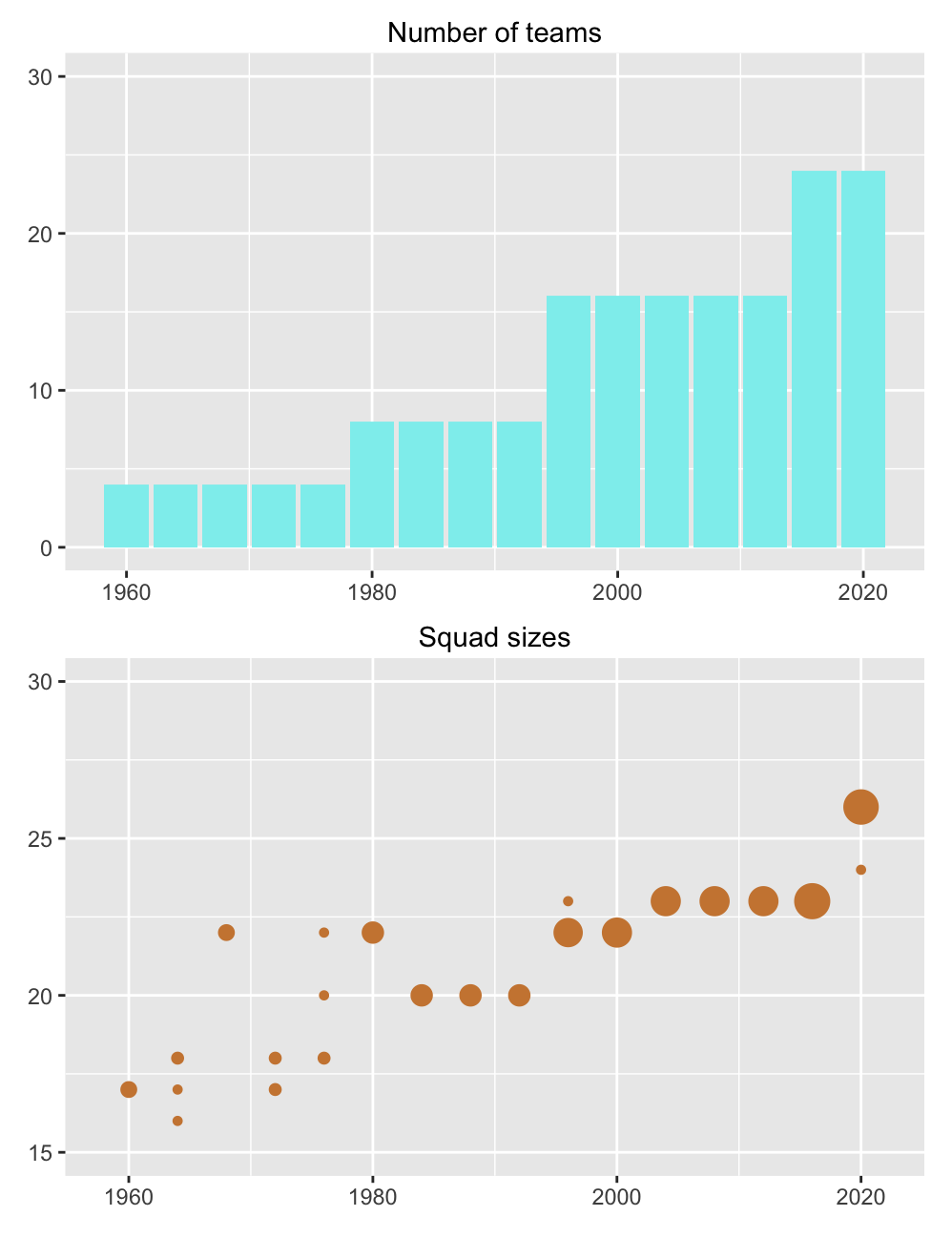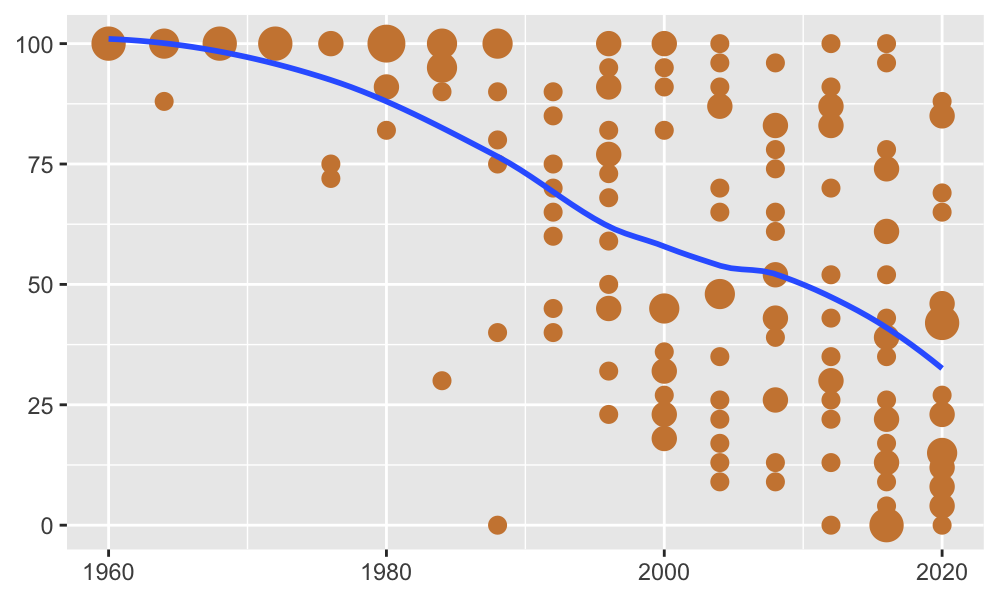15.1 The European Football Championship since 1960
The UEFA European Championship has grown considerably over the years. There were 17 entries for the first competition in 1960 with 4 qualifying to compete in the finals. The size of the finals was expanded to 8 teams in 1980, to 16 in 1996 and to 24 in 2016. In 2020 there were 55 entries in the qualifying stages competing for 24 places in the finals. Wikipedia says that there are 51 independent European states. However, there were four separate teams from the United Kingdom (England, Scotland, Wales, Northern Ireland) and one from the British Overseas Territory of Gibraltar. The Faroe Islands, an autonomous territory of Denmark entered, as did Israel, although it is neither fully European nor transcontinental (such as Russia and Turkey). The only European states not to take part, other than the UK, were Monaco and Vatican City.
The squad sizes increased over time too, beginning with 17 and rising to 26. Bigger tournaments need more players.

Figure 15.1: Numbers of teams (above) and squad sizes (below) over the 16 European Championships. A point’s area in the lower plot is proportional to the number of countries with that value (and the vertical scale starts at 15).
There may have been no regulations concerning squad sizes in the early competitions and that would explain the variation in 1964 and 1976. Since then, there must have been a fixed limit that all teams followed with two exceptions. In 1996 Germany had several injured players and were allowed to call up an extra player, Jens Todt, before the final, although he did not actually play. In the 2020 competition the Spanish manager called up only 24 of the 26 players permitted, not wanting to work with a large squad, when several would not be needed in the tournament.
At the first competition in 1960 just 4 teams took part and they only used players from their own national leagues. As the competition expanded, the squads got bigger and more teams from smaller countries took part. Their best players often played for richer clubs in bigger countries. The steady downward progression in the average percentage of players coming from a nation’s own league can be seen in Figure 15.2.

Figure 15.2: Percentage of a nation’s players who played in their own country’s league for each of the 16 European Championships. Circle area is proportional to the number of countries with that percentage. A loess smooth has been added.
The first team to have players from another league was Spain in 1964, who included two players based in Italy. The first team with no players from their own country’s league was the Republic of Ireland in 1988. This was partly because their best players played elsewhere, but also because of “the grandparent rule”, whereby players could play for the country of any of their parents or grandparents. The Ireland manager at the time, Jack Charlton–who was English, used this a lot. He sought players out with Irish ancestry who would not be selected for the country of their own nationality and encouraged them to experience international football by playing for Ireland. In 2016 there was only one team with all players playing in its own country (England), and four teams with no players playing in their own country.